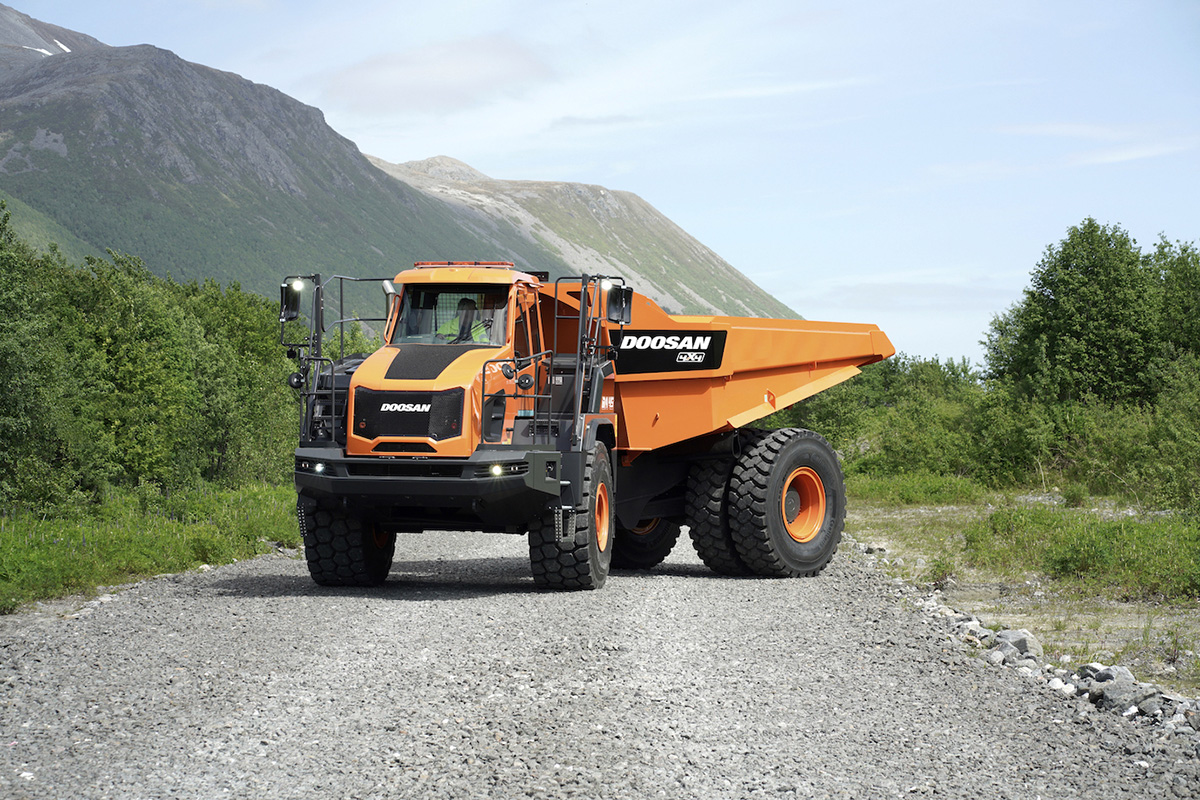DOOSAN will launch its new 4×4 articulated dump truck (ADT) at bauma 2022.
The manufacturer said the model can climb up bigger inclinations than equivalent rigid dump trucks (RDTs) and ‘performs better’ than RDTs in wet and slippery conditions.
Complementing Doosan’s range of Stage V-compliant 6×6 models, the new 4×4 version of the DA45-7 ADT is intended to compete with rigid dump trucks (RDTs) in the 40-tonne class.
The front truck and cab unit is the same as in the original 6×6 model, with modifications being made on the rear dumper unit only. Featuring a ZF EP8-420 transmission, the 4×4 DA45-7 is a two-axle ADT with twin wheels at the rear, and with a dumper section similar to that on RDTs in the 40-tonne class.
“With superior operation on poorer roads, smoother surfaces and steeper terrain, the aim of our new 4×4 machine is to challenge RDTs in the 40-tonne class, by providing a dumper product that delivers much more than RDTs,” said Beka Nemstsveridze, ADT product manager at Doosan.
Described as performing ‘better’ in conditions that are tough for RDTs, the new 4×4 DA45-7 ADT has a width of less than 4m to avoid the need for special transportation. A shorter turning radius and the design of the rear dumper unit, which is more suited to carrying flat and heavy rocks, provide ‘particular advantages’ in the mining and tunnelling industries, Doosan added.
The latter are growing markets for ADTs, and include short-term mining projects, quarrying and contract mining industries, especially those in southern Africa, the UK and Australia. Construction and bulk earthmoving contractors involved in roads, dams, airports, landfills and development projects are also large users of ADTs.
“The development of our 4×4 ADT was inspired by customer demand and the new 4×4 ADT can meet the needs of markets around the world by offering a compelling advantage to customers with specific requirements,” Beka Nemstsveridze added. “For example, a machine like this might be able to extend the season for a mine that normally has to be stopped for a certain period due to the rainy season.”
The model has been developed at the Doosan ADT plant in Elnesvågen, near Molde in Norway.











